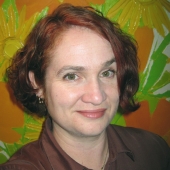THIS ARTICLE IS MORE THAN FIVE YEARS OLD
This article is more than five years old. Autism research — and science in general — is constantly evolving, so older articles may contain information or theories that have been reevaluated since their original publication date.
Editor’s Note
Spectrum’s house style is to refer to ‘people with autism’ rather than ‘autistic people.’ But we made an exception in this instance because of the author’s preference.

I always look forward to the annual meeting of the International Society for Autism Research (INSAR, formerly IMFAR). As managing editor of an autism information nexus called the Thinking Person’s Guide to Autism, I take pleasure in learning from brilliant autism researchers at this event.
As the parent of a high-support autistic son who is approaching adulthood, I am gratified that research presented at INSAR increasingly reflects issues faced by autistic people of all ages. It now focuses on quality of life and support needs rather than solely on causes of autism, infant studies and mouse models.
Autistic people have long insisted on being involved in research efforts on their condition. Yet meaningful inclusion of perspectives and priorities from people on the spectrum is relatively recent, occurring only in the past two years.
In 2011, the first time I attended the meeting, I noted that autistic people were always referred to as “they,” never “we.” The meeting featured a single symposium about adults with autism. That session decried the lack of lifespan-oriented research and related long-term studies. There were no sessions or papers specifically addressing or even acknowledging the research priorities of people on the spectrum, nor were there any autistic presenters.
Journalist Emily Willingham attended the conference the following year and observed a dearth of understanding about autistic people.
“I personally found a lack of autistic collaboration in many studies where it clearly would have helped,” Willingham told the Thinking Person’s Guide to Autism. She said she also had “an overall impression that many, many researchers are so distanced from their ‘subjects’ or the population they’re evaluating that they end up infantilizing, othering and marginalizing them with their language and interpretations without even realizing it.”
Two years later, in 2014, then-INSAR president Helen Tager-Flusberg lauded the meetings for their geographically diverse family and professional collaborations — without mentioning autistic people once.
Life-long condition:
By contrast, the conference last year in San Francisco had an entire track devoted to adult outcomes, including a dedicated poster session. It also featured, for the second year, a special interest group on the necessity, ethics and logistics of autistic people’s contributions to research, plus sessions reflecting their and their families’ real-life concerns.
Even technical INSAR research presentations, such as those focusing on brain imaging and wearable biosensors, have increasingly incorporated language and approaches more useful for autistic people: In 2011, a keynote on neural plasticity by Eric Courchesne, co-director of the Autism Center of Excellence at the University of California, San Diego, talked about “recovery,” which is inappropriate because autism is neither a disease nor an injury.
By contrast, at last year’s meeting, sessions on brain imaging tended to refer to autism as a lifelong condition. This pivot may seem subtle, but every time autism researchers prioritize lifespan issues, autistic people benefit.
I’m not claiming that the INSAR meeting is now a wonderland of neurodiversity. Too many presentations are still focused on autism’s cause. Many autistic people resent this approach because it characterizes them as broken, rather than in need of better services, accommodations and understanding.
This causation bias also diverts funds and focus from underexamined quality-of-life matters, such as housing, education, employment, communication, motor skills, atypical medication reactions, sensory issues, sexuality and sleep irregularities. Attempts to make INSAR researchers aware of these priorities include last year’s #AutIMFAR Twitter chat.
Leadership gap:
Another barrier to a more inclusive conference is that not all autistic attendees are open about their own neurostatus.
“I wish more autistic members would come out,” says self-advocate John Elder Robison, who has attended the meeting since 2010. “I think that’s a matter of time; I see more openly autistic scientists every year.”
Autistic people are not included in as many areas of INSAR leadership as they should be. “I know that there are autistic people participating on committees, but, as yet, there are no autistic [INSAR] officers,” says Dena Gassner, a graduate student at Adelphi University in New York, who founded the special interest group Incorporating Autistic Intellect in Autism Research.
They are also underrepresented as presenters in conference talks and panels, and not a single keynote speaker has been autistic. Researchers now often include the perspectives of autistic people in their presentations but don’t consider them collaborators. “This is a weakness,” Gassner says.
Having more autistic people at the conference would help address these representation issues, but there are other considerations in enabling more autistic participation. The conference’s leaders could make the setting friendlier to people with sensory sensitivities and processing difficulties. For example, they could provide noise-canceling headphones, and real-time captioning for people who need to wear them or who have difficulty processing spoken language. They could also provide INSAR membership and registration discounts for autistic people, most of whom are under- or unemployed, says Stephen Shore, assistant professor of education at Adelphi University.
I remain hopeful that these meetings will continue to evolve to meet the needs and interests of autistic people. The schedule for this year’s meeting suggests it will. It features collaborations with autistic people and panels on adolescent and adult issues, mental health, sexuality and quality of life and services.
For the first time, it feels like a conference for the people it’s supposed to be serving: with too many options for autistic people to choose from, rather than too few.
Shannon Des Roches Rosa is managing editor of Thinking Person’s Guide to Autism.

By joining the discussion, you agree to our privacy policy.